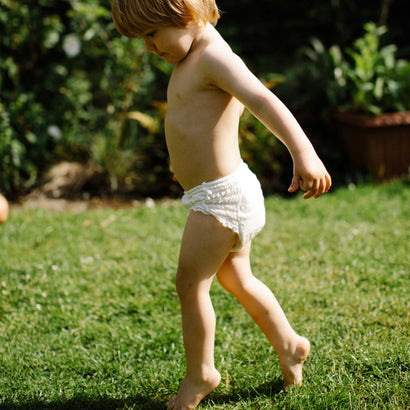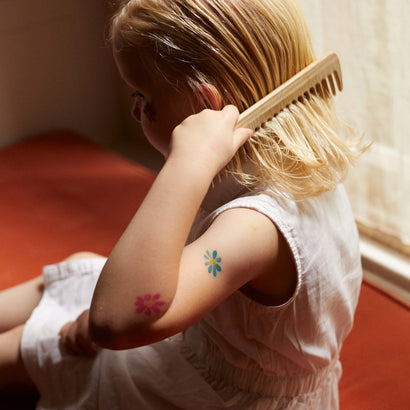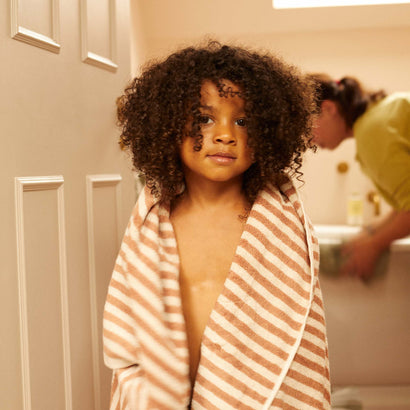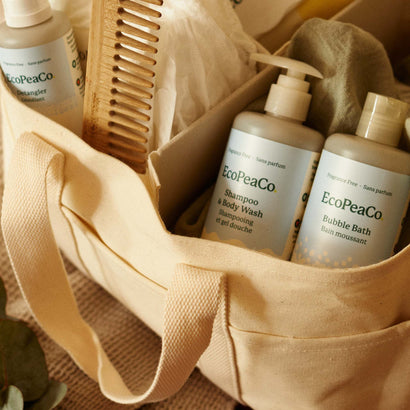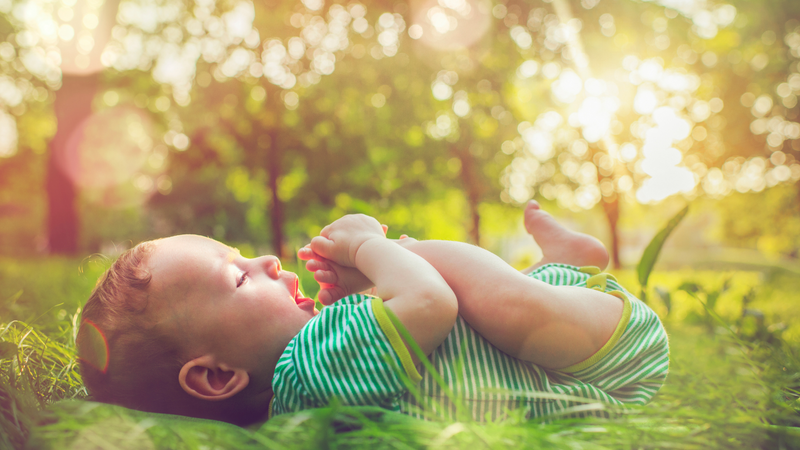For many families, the nursery is a beloved sanctuary during the first year of baby’s life, and beyond. It’s a primary site for sleeping, playing, changing, and feeding, and can provide cozy, familiar surroundings that make baby feel safe and calm. However, there are potential nursery inhabitants that could pose a threat to the health of the baby and Mother Nature. Everything from furniture, flooring, and paint, to toys, bedding, and clothing can create unhealthy circumstances most parents are unaware of. Luckily, you can minimize these hazards with simple eco-conscious choices and purchases.
- Repurpose furniture. Many times, furniture used in a nursery is sold, donated, or thrown away as baby ages. This leads to a lot of money spent for items you’ll probably replace after a few years, and multiple articles ending up in the landfill. So if possible, furnish the nursery with pieces you already own, or furniture friends or family are willing to loan or give you.
You can also find furniture in second hand stores, just make sure your selections don’t have peeling paint. In addition, it’s best to buy a new crib, or source it from someone you know, as you want to confirm its safety.
When buying new, consider furniture that can grow with your child. For example, a crib that can turn into a toddler bed, and a rocking chair disguised as an armchair. Up your eco-consciousness by finding pieces made of bamboo, as it’s a renewable resource, naturally anti-bacterial, water resistant, and super durable.
- Paint the nursery with a zero-VOC product. Painting the nursery is like a rite of passage for many parents. However, this exciting project often leads to the release of VOCs (volatile organic compounds), which are gases emitted from certain solids and liquids that can cause short- and long-term health effects. Paint is known for giving off high concentrations of VOCs.
The solution to this is as easy as purchasing VOC-free paints, which most brands now provide. In addition to being VOC-free, many eco-conscious paint manufacturers utilize low-waste production methods, recycled packaging, and water conservation systems. You can also find paint that is antimicrobial, minimizing the growth of mildew.
- Use a 100% organic cotton mattress, and organic cotton bedding. Not only are organic mattresses and bedding better for baby’s skin and health, but they’re kinder to the environment. Most organic cotton is grown without the use of synthetic pesticides and fertilizers, creating safer products and healthier conditions on the farms where the cotton is grown. And because organic cotton doesn’t go through harsh chemical processing, it lasts longer and doesn’t expose the baby or planet to harmful chemical emissions.
Tip: Make sure the company you’re purchasing organic cotton products from is certified by the Global Organic Textile Standard (GOTS).
- Purchase second hand baby clothes. All those adorable clothes in the nursery will probably only fit baby for a few months. They grow shockingly fast. And while you’d think new baby clothes would be affordable, many are almost as expensive as your own. Enter second-hand clothing stores. Often, the donated baby clothes are brought in before they get too much use, so you’re scoring almost-new products without the high cost. You’re also helping save the planet.
According to the Ellen Macarthur Foundation, a non-profit aimed at creating a restorative and regenerative economy, textile production produces 1.2 billion tons of greenhouse gas every year. Shopping second-hand significantly reduces your contribution to that statistic.
- Opt for non-plastic toys. The facilitator of a “mommy and me” class I attended would say, “A baby’s mouth is their laboratory.” She’s right. In many ways, babies use their mouths to explore the world, which is why almost everything they can get their hands on goes straight into their mouth. So, when baby’s toys are plastic, they’re regularly exposed to toxins like phthalates, BPA, fire retardants, and other chemicals. In addition, these toys are often cheaply made, meaning they can present choking hazards, and need to be frequently replaced.
Save yourself stress and money by opting for toys made from wood, metal, or cloth. (Regarding wooden toys, purchase unfinished solid wood, or wood with water-based stains.) Enhance your eco-consciousness by sourcing these toys from local craftsmen, or sellers on sites like Etsy.
-
Use area rugs instead of carpet. Carpets pose a slew of potential health hazards. New carpet often gives off fumes, while all carpet is a trap for dust, allergens, pesticides, animal waste, and other bacteria brought in on shoes, clothes, or pets. If you want to put in new flooring, bamboo or cork is a great choice. And because it’s nice to have a cozy zone for baby to play, you can place one or two area rugs made of eco-conscious material like dye-free sisal, seagrass, jute, and organic wool or cotton.
- Select energy-efficient, LED lightbulbs. LED lightbulbs are 80% more efficient than common alternatives like fluorescent and incandescent lights, as 95% of the energy in LEDs is converted into light, and only 5% is wasted as heat. Fluorescent bulbs on the other hand waste 95% of energy as heat, and just use 5% for light. In addition, LED bulbs need less power, meaning they demand less from power plants and minimize greenhouse emissions.
LEDs also help you go through fewer light bulbs each year, reducing the amount of bulbs sitting in landfills, and the amount of money and time you spend buying new ones.
- Clear the air with houseplants. Furniture, toys, lamps, lightbulbs, and other items that typically fill a nursery can release toxic agents like Trichloroethylene, Formaldehyde, Benzene, and Xylene into the air. These toxins can cause dizziness, nausea, drowsiness and headache, an irritated mouth, nose and throat, itchy eyes, and other unpleasant symptoms. However, you can remove these toxins, while beautifying the nursery.
NASA researchers found that houseplants such as the Peace Lily, Gerbera Daisy, Florist’s Chrysanthemum, Red Edged Dracaena, and English Ivy all help reduce the presence of those aforementioned toxins. But to ensure the baby doesn’t get their hands on the plants, hang them, or place them on an out-of-reach shelf.
-
Use window guards. Because fresh air is one of the best ways to enliven a space, purchase window guards for the nursery, preventing baby from crawling out when windows are open.
- Clean the room with a homemade, non-toxic solution. The spit-up, poop, urine, drool, and other germ-containing substances that frequent a nursery require regular cleaning. But when you clean with standard products you’re often unknowingly contaminating the space with phthalates, ammonia, chlorine, sodium hydroxide, and other dangerous substances.
Eliminate this concern by making your own cleaning products with simple ingredients like vinegar, lemon juice, baking soda, and essential oils. A simple multi-surface recipe consists of mixing 1 cup water, 1/4 cup white vinegar, and 20 drops of your essential oil of choice. If you need a more abrasive cleaner, mix baking soda with natural soap. For windows, use 1 part vinegar to 1 part water.



